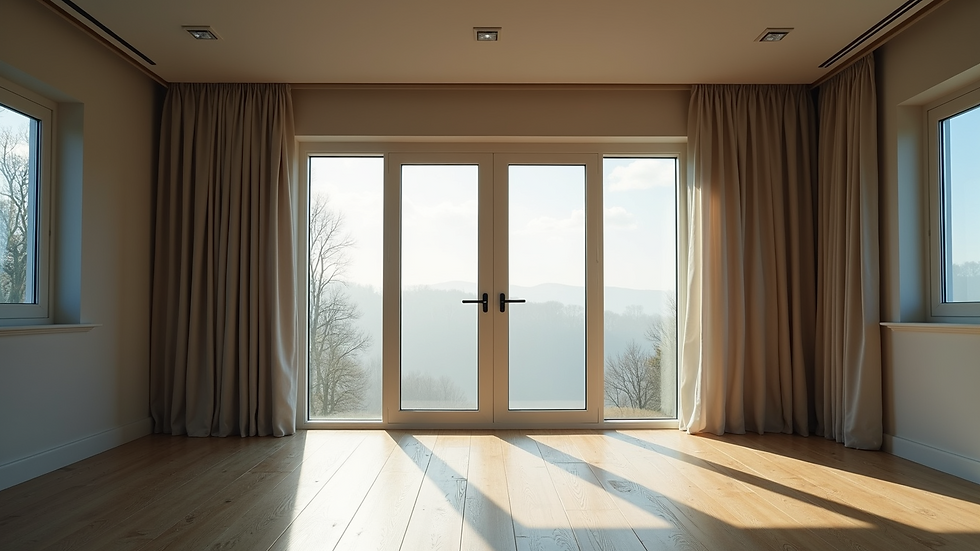Simple Tips for Effective Home Moisture Control
- jesseinnes
- Jun 26
- 3 min read
Moisture in your home can lead to a multitude of problems, from mold growth to structural damage. Managing this moisture is vital for maintaining a healthy environment. In this article, we will explore simple yet effective tips for controlling moisture in your home and ensuring a safe living space.
Why Control Home Moisture?
Excess moisture can create an environment conducive to mold, mildew, and pests. These issues can cause health problems, such as allergies and respiratory issues, and can lead to costly repairs. The key to avoiding these complications is to control moisture effectively. Ensuring your home remains dry also enhances overall comfort and extends the life of your building materials.

Tips for Effective Home Moisture Control
Here are some practical tips that can help you maintain ideal moisture levels in your home:
Use a Dehumidifier:
One of the most effective solutions for controlling moisture in a home is using a dehumidifier. These devices work by removing excess humidity from the air. You can place it in high-moisture areas such as basements, kitchens, or bathrooms. To maximize efficiency, ensure it has an automatic shut-off feature that will prevent it from running when the humidity is at an acceptable level.
Ventilate Properly:
Importance of Proper Ventilation
Ensuring proper ventilation in your home is crucial. Open windows when weather permits, use exhaust fans in bathrooms and kitchens, and consider installing vents in crawl spaces. Proper airflow can significantly reduce moisture levels. Research from the CSIRO indicates that adequate ventilation can reduce humidity levels by up to 30%, which is essential for preventing mold growth.
Seal Windows and Doors:
Windows and doors can be significant sources of moisture intrusion. Seal any gaps with caulk or weather stripping. This not only helps in moisture control but also improves energy efficiency in your home.

Check Plumbing for Leaks:
Regularly inspect your plumbing for leaks. A small leak can lead to significant moisture issues over time. If you notice damp spots on your walls or ceilings, check the plumbing in that area. Repair any leaks promptly to avoid further issues.
Use Moisture Barriers:
In areas prone to moisture, such as basements, integrating moisture barriers can be very beneficial. This can include plastic sheeting on soil in crawl spaces or using waterproof paint on basement walls.
How Do I Stop Moisture Build Up in My House?
To effectively stop moisture build-up in your home, consider the following strategies:
Limit Indoor Plants:
While indoor plants can enhance your home's aesthetic, they can also contribute to humidity. If you notice moisture problems, consider reducing the number of plants you keep indoors.
Monitor Humidity Levels:
Investing in a hygrometer can help you monitor humidity levels easily. Ideally, indoor humidity should be between 30-50%. If your hygrometer indicates levels above this, take action to reduce moisture.
Manage Appliances:
Some household appliances generate moisture during their use. When cooking, use exhaust fans, and consider venting your dryer to the outside rather than indoors.
Keep Gutters Clean:
Clogged gutters can lead to standing water around your home's foundation, increasing moisture levels. Regularly cleaning gutters allows for proper drainage away from your home, reducing the risk of moisture infiltration.

Insulate Pipes:
Insulating hot water pipes can prevent condensation that can lead to excess moisture in your home. This is especially important in colder climates where temperature differences between pipes and surrounding air can create condensation.
Final Thoughts
Maintaining a moisture-free home is essential for your health and the longevity of your property. By following these practical tips, you can significantly reduce moisture levels and create a comfortable living environment. Remember, proactive home moisture control helps avoid costly repairs and keeps your home safe and healthy.
For those seeking more information on effective techniques for managing humidity, check out our detailed guide on home moisture control. Your efforts today can lead to a better living environment tomorrow!






Comments